The Magic of a Sea Turtle Baby
The Magic of a Sea Turtle Baby
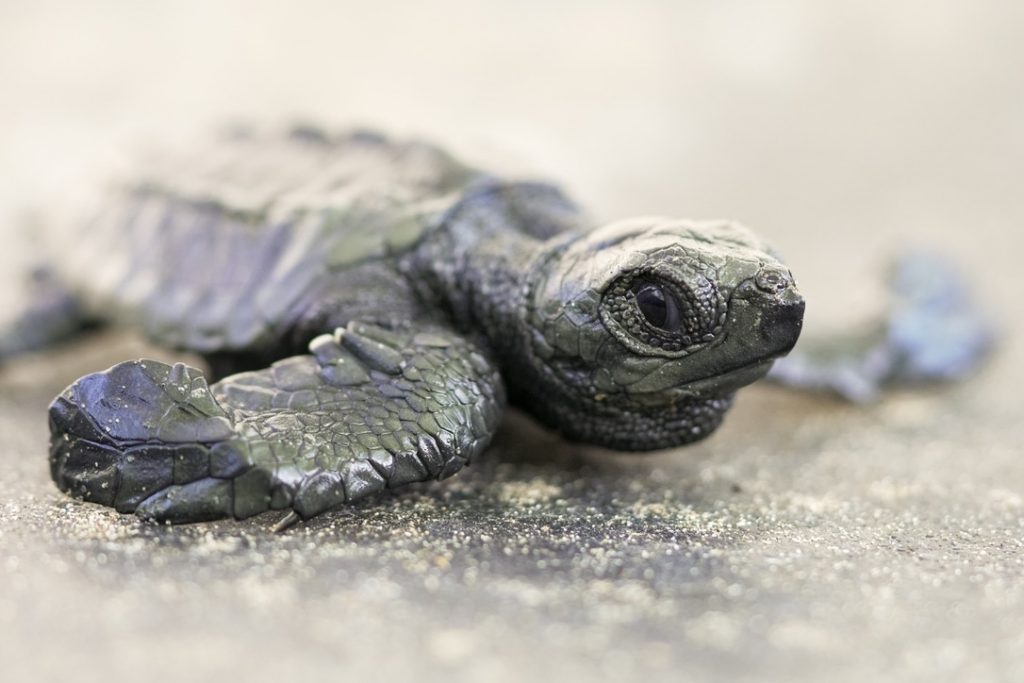
Loggerhead baby sea turtles don’t get much cuter!
Sea Turtle Baby
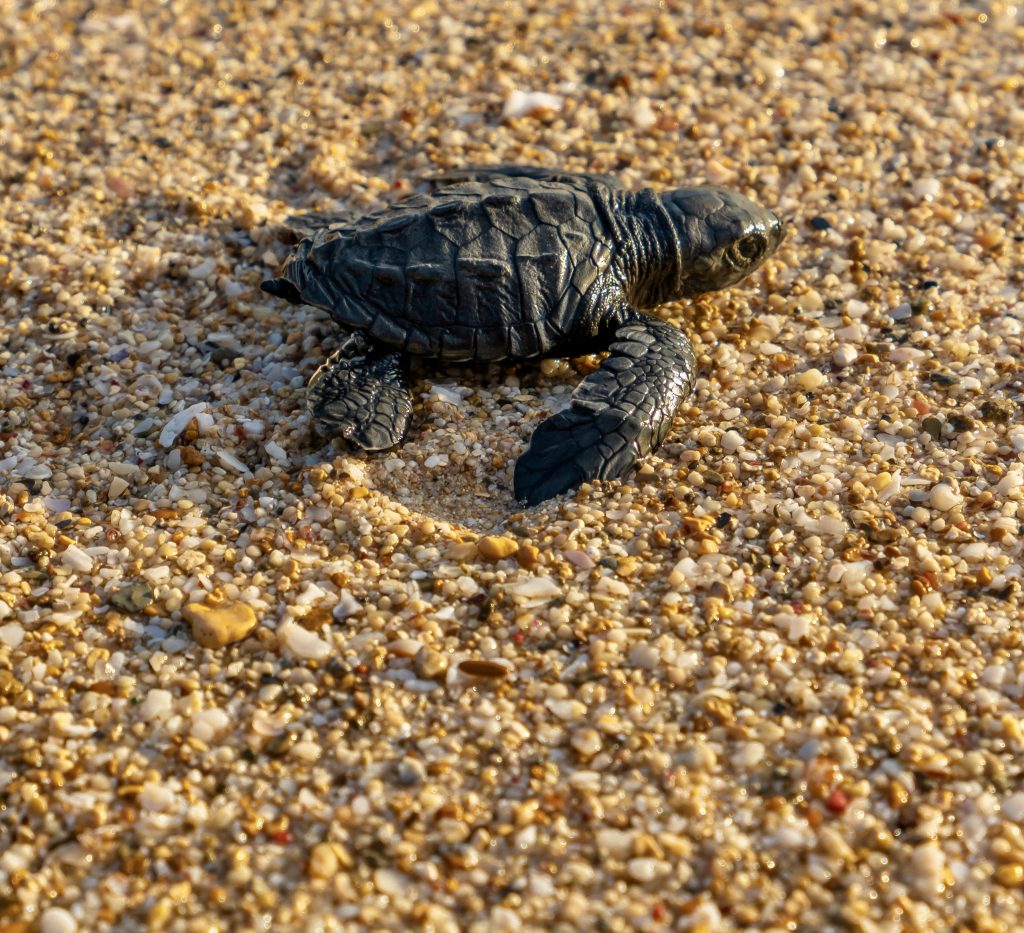
The baby is moving toward the water!
As we watch it, we realize one of its tiny back flippers is dragging. So what should we do? The sea turtle baby is clearly struggling to reach the waves. But the tide is rapidly going out…or is it coming in?
First, What are Sea Turtles

Sea turtles are air breathing reptiles that live in our oceans.
Let’s back up a bit. Sea turtles are one of our favorite underdog animals. First of all, they are magnificent, ancient creatures. Some live up to 80 years. And of the seven species worldwide, six are endangered. To find out more about them, read our “Sea Turtles” fun blog.
blog.
Back to our Sea Turtle Baby

Should we help this tiny turtle?
When you do, it is truly magical. A once in a lifetime experience.
But this baby seems hurt. Its back flipper is dragging. And a huge lighting storm is approaching which means we have to get off the beach fast.
Who to Call?
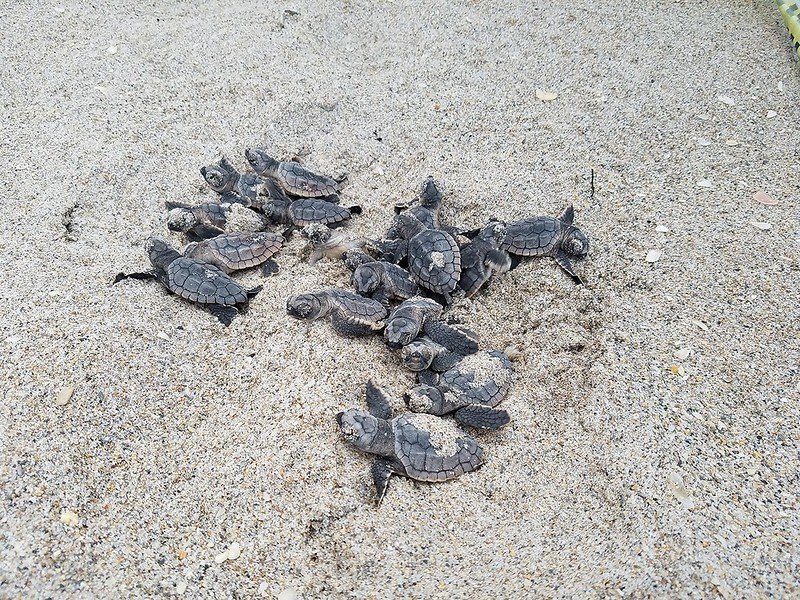
Sea turtle babies emerging from a nest
We quickly Google what to do and find very little info. We read it is against federal & state law to even touch one. It says to call the Florida Fish & Wildlife Conservation Commission. But it is Sunday and the storm is getting closer.
As we are trying to figure out what to do, a woman walks by and tells us she has put the hatchling in the water once but it keeps getting stranded as the waves recede.
We are so torn and my heart is breaking watching this little one try to survive. It is estimated only 1 in 1,000 sea turtle babies make it to adulthood.
We Decide To Let Nature Take Her Course
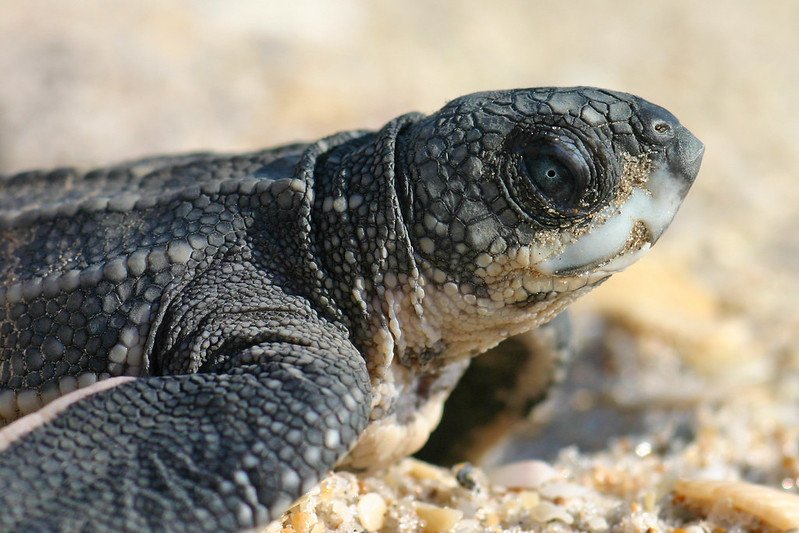
Should you pick up a baby sea turtle? Absolutely not! Photo: Flickr/Florida Fish & Wildlife
As the rain starts pelting us and the lightning is becoming more intense, we make the heart-wrenching decision to let Mother Nature take her course. We watch as the waves lap the sea turtle baby. Luckily we determine the tide is coming in so there is hope.
We turn and walk away. The water is starting to surround the little one. I am in tears but determined to learn what to do differently the next time. And hopeful, this baby is one of the ones to make it.
Lessons Learned
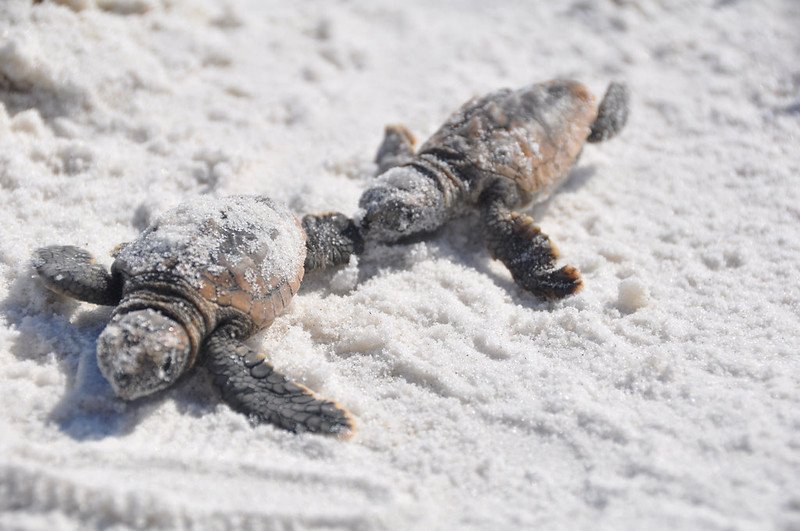
One way to help? You can move obstacles from the babies path to the ocean.
What have we learned since we left the tiny baby on the beach? The big lesson? Do not touch the turtle and call a local hotline to see if you should do something to help.
It is widely believed sea turtle babies imprint on the sand as they make their way from the nest to the ocean. By imprinting, the females know where to nest when it is time to lay their eggs. They store the smells, magnetic fields. etc in their memories.
After mating, most female turtles will return to the same beach where they hatched. Absolutely fascinating!
Also, the shell of the baby is very fragile and handling it might cause it harm. Plus, the long journey to the ocean is helping the baby gain strength for its upcoming ocean swim.
What you can do:
- Move any obstacles out of its path to the water. And fill in any holes or divets which might impede its journey.
- Stay close to scare off birds that see the baby as a quick meal.
- Take photos without a flash, especially at night. A flash can disorient the sea turtle baby.
- Enjoy the amazing experience and be happy you were a witness to the many miracles of Mother Nature.
We Are Candid Certified!

P.O. Box 128
Lynn, North Carolina, 28750
Champions for Wildlife is a registered 501(c)(3) nonprofit charitable organization.
EIN #87-4584220
NEWSLETTER SIGN-UP

